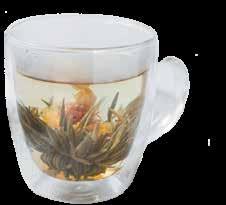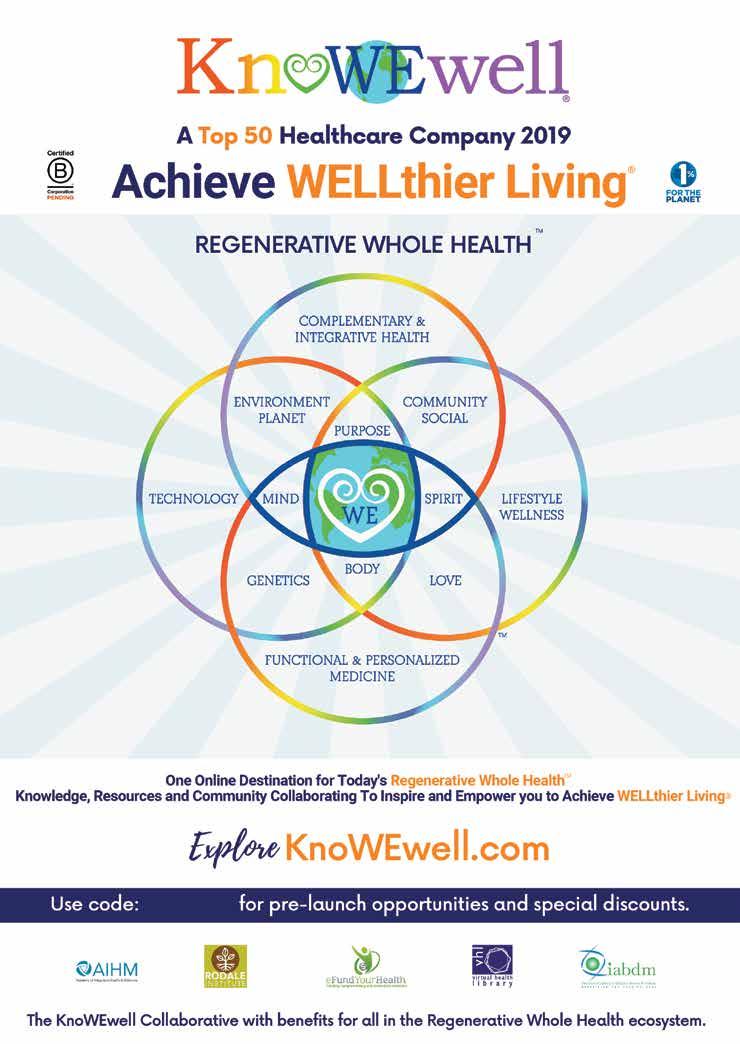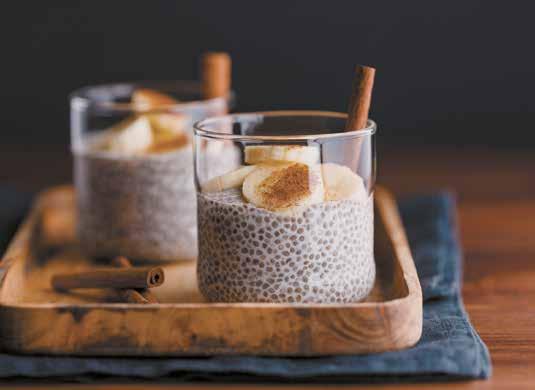
14 minute read
CALM DOWN
guilhermealmeida/Pexels.com
Calm Down Taming the Flames of Stress-Related Illness
Advertisement
by Marlaina Donato
We are beings of neurochemical and hormonal intricacy, and within this mixed bag of biology lies our magic. Our human experience is visceral; we cry from sadness and joy, flush from embarrassment, laugh with amusement and exhibit quirky mannerisms when we lie. Whether we see it as a blessing or a curse, we’re hardwired to embody the sacred fire of our emotions.
It also means that stress and our bodies are in perpetual partnership. “Systematically, the mind and body work together. Grabbing your belly when you hear bad news and saying, ‘I feel sick,’ or having ‘butterflies in your stomach’ are a testament to how everyday stress affects us physically,” says Stephanie Mansour, Chicago fitness expert and host of the national PBS show Step It Up With Steph.
“Stress serves a useful purpose by increasing alertness—the sometimes lifesaving ‘fight-or-flight’ response—but chronic stress leads to elevated stress hormones like cortisol and catechol- amines,” says emergency room physician Thomas Krisanda, at Northwest Hospital, in Randallstown, Maryland. “Cortisol can elevate blood glucose and suppress the immune system. Elevated catecholamines raise blood pressure and stress the heart. Over time, this can lead to hypertension, heart disease, kidney disease, diabetes or strokes.”
According to The American Institute of Stress, 77 percent of people experience the physical backlash of emotional stress in the form of headaches, chronic migraines, fatigue, digestive woes, muscle tension, dizziness and changes in libido. Research published this year in the Journal of the American Heart Associa- tion shows that children that experience severe adversity or live with alcoholics or drug addicts are at a 50 percent higher risk for developing cardiovascular disease later in life. Experts agree that this statistic goes beyond poor lifestyle choices, and might point to a biological inability to cope with everyday pressures.
Working with—rather than against—the body’s nervous sys- tem by employing lifestyle changes, releasing trauma and consid- ering options like a nourishing diet, safe herbal options and gentle energy modalities can help to break a vicious cycle.
Gut Instincts
Studies involving both mice and humans show that beneficial gut microorganisms are altered by emotional stress. The same bacteria responsible for bolstering the body’s fortress of im- munity also generate neurotransmitters like serotonin, dopa-
mine and norepinephrine. These neurochemicals in the gut’s enteric nervous system control major biological functions that include heart rate, sleep cycles, muscle movement and mood.
While commonly prescribed antibiotics eradicate infectious invaders, they also kill off beneficial bacteria and neurotransmitters, opening the door to depressive disorders. Because approximately 95 percent of the body’s serotonin is produced in the gut, it’s not surprising that overuse of antibiotics has been associated with mental health conditions. British research published in the Journal of Clinical Psychiatry in 2015 documents case-control studies over an 18-year period involving 202,974 patients with depression. The findings show a high risk for anxiety and depression following repeated antibiotic use.
Connecting the dots further, 2018 research published in the Journal of Neuroendocrinology correlates compromised intestinal permeability with a weakened blood-brain barrier and alcohol addiction. Research published in 2014 in the journal PLOS One involving patients with irritable bowel syndrome (IBS) reveals abnormalities in catecholamines, elevated plasma cortisol and hyperactivity of the amygdala—the part of the brain that can become stuck on overdrive from trauma and other life stresses.
In a nutshell, negative emotional states can suppress immunity and foster more frequent antibiotic prescriptions and in turn, promote neurological loops of chronic depression and anxiety, and even more compromised immune response.
Functional gastrointestinal disorders like IBS and inflammation-driven Crohn’s disease are often exacerbated by emotional upset and improved with stress management techniques like biofeedback, cognitive behavioral therapy, psychoanalysis, hypnotherapy, meditation and breath work.
One Body, Many Selves
Resolving emotional trauma can offer unexpected hope for conditions that elude improvement or scientific understanding. A deeper look into how unrecognized or unreleased emotional pain can contribute to disease might help to solve the riddle of digestive problems, eczema, inflammatory
bowel conditions and pain syndromes, including the multi-system agonies of fibromyalgia and chronic fatigue syndrome. It’s a widespread misunderstanding that psychosomatic (mind-body) health conditions are imaginary or the product of mental instability. In actuality, the term psychosomatic simply refers to physical diseases with no organic origin that are presumed to have unconscious emotional taproots.
“We are made up of different types of energy,” explains LaStacia Ross, a reiki master and sound healer at Eclectic Soul Studio, in Pittsburg, Kansas. “Physical or sensory energy is the energy of the physical body. Our outer energy field is subtle energy which consists of layers and includes thoughts and emotions. I like to think of the subtle energy field as a library containing the records of everything we’ve ever experienced.”
Reiki, a form of non-touch therapy, is now deemed valuable by many respected hospitals, like the Memorial Sloan Kettering Cancer Center, in Manhattan. Springboarding from the philosophy that we are trinities of body, mind and spirit, reiki and other forms of energy medicine aim to encourage the flow of vital life force. Ross, who also uses sound resonance via tuning forks in her work, has witnessed significant improvement in her clients. “Energy work can help release stored energetic patterns of trauma and stress that no longer serve us,” she says. “Relaxation is an immediate benefit of energy work. People often feel a huge mental weight lifted and report pain relief, sometimes after just one session.” Despite the many gains of energy work, Ross emphasizes individual timing. “On a subconscious level, pain or illness can serve us in some way without us realizing it. Sometimes we’re not ready to work through our issues or let them go, even if we think we are.”
Investing in Equilibrium
Stress-induced psychosomatic illness does not discriminate, and even affects members of the medical field. A 2009 study published in the Indian Journal of Occupational and Environmental Medicine found that professional burnout in nurses can manifest as back and neck pain, acidity, anger and impaired memory.
Krisanda underscores the importance of self-care in all walks of life. “If you don’t take care of yourself, you are useless to care
Everyday Practical Tips
From Stephanie Mansour:
n Deep breathing and rolling the shoulders forward and back a few times can relieve muscle tension.
n Eating something crunchy like an apple or carrots can lessen feelings of stress.
n Meditating for even one minute can help reduce excessive cortisol in the body. Doing small increments daily rather than over long intervals net better and bigger benefits. n If your mind is racing 24/7 and breathing techniques don’t work, change your environment. Get up and go to another room in the house. Go outside. If tight on space and can't go outside, turn your body to look in a different direction. Stay in the same spot on the couch and just look at something else. n Don’t put your body under more stress with demanding, cortisol-fueling workouts; opt for yoga, meditation and Pilates.
n When you get your heart rate up (in as quickly as five minutes of doing cardio), you feel happier. n Maintain a healthy sleep schedule and go to bed earlier.
From Sarah Kate Benjamin:
n Reconnect to the earth in whatever way you can; go for a walk, cook a meal, smell flowers or just sit outside.
From LaStacia Ross:
n As an energy exercise, try what I call The Fountain of Light: See and feel white light coming up from the earth and into your feet. Feel it move all the way up through your body, out of your head and back down to your feet to start again, like a fountain. Repeat this many times, feeling the vibrant, white light energy flowing through you. Plant Power for Combatting Stress
Sarah Kate Benjamin’s Personal Favorites:
Passionflower (Passiflora incarnata) soothes restless minds from anxiety and insomnia, and eases menstrual cramps or muscle spasms. Skullcap (Scutellaria lateriflora) helps to strengthen the brain and revitalize the central nervous system, and helps to calm the mind and relieve nervous stress and headaches. It is even more beneficial when combined with lavender or chamomile. Chamomile (Matricaria chamomilla) helps to soothe emotional and muscle tension; relieve stress-related gut symptoms like gas, cramping, irritable bowel syndrome and ulcers; calm heat-related emotional and physical issues such as eczema, anger and frustration; and generally promote a sense of calm. Wonderful in baths, teas and as an herbal garnish.
In addition to Benjamin’s recommendations, other stress-fighting herbs to consider are Ginkgo, panax and Siberian ginseng, fo-ti, rhodiola, reishi mushroom, goji berries, licorice root, lavender, rose, lemon balm, tulsi (holy basil), ashwagandha and mimosa bark.

for others. Adopt a healthy diet and exercise and make it a routine. We live in a very materialistic society, and I believe this also leads to stress, unhappiness and a sense of being entitled and never being satisfied. Just let go.”
He also stresses the importance of support. “An emergency room is an incredibly hectic, frightening and sometimes violent place. I rely on my colleagues, and we support each other. For me, the most important thing is to realize that I’m not in it alone.” Krisanda also finds balance by taking a few minutes in a quiet place to collect his thoughts and enjoy a peaceful moment.
Basic, whole foods can help to maintain homeostasis. “Make sure that food is fueling you,” says Mansour. “Cooked vegetables and broths are very soothing. Instead of a juice cleanse or an extreme diet, focus on nourishing, calming foods like soups, lean proteins to stabilize blood sugar levels and healthy fats to support brain function. Reducing alcohol can help improve liver function.”
Sarah Kate Benjamin, a holistic chef and herbalist in Sebastopol, California, finds her own healing rhythms by eating with the seasons and using medicinal plants in inspired, everyday dishes. Co-author of The Kosmic Kitchen Cookbook: Everyday Herbalism and Recipes for Radical Wellness, she sees herbs as life-giving examples of resilience. “Herbs have been here long before us and have experienced their own form of stressors. Working with nervous systemsupportive herbs in my food, beverages or even as tinctures really help me find balance when I’m overwhelmed.”
Some of her allies are oat tops, lemon balm, skullcap, chamomile and passionflower. For Benjamin, everyday choices play a huge role in healing. “Making small lifestyle shifts in your work or home life can really help you move into a more relaxed state. I like to think of it as a sort of mantra: ‘Help the herbs help you,’” she says. In a world that is fixated on external validation, little things matter. “If I give myself permission to do the things that really nourish me, I’ll be the best version of myself. Perhaps most importantly, I will like me, and that matters tremendously.”
Marlaina Donato is an author and recording artist. Connect at AutumnEmbersMusic.com.
NAPUB110


the pandemic intensifying the normal academic, social and hormonal turmoil of these pivotal years. It’s no wonder teens are reporting record levels of stress, anxiety and depression: In a Pew Research survey, 70 percent of teens said mental health was a major problem among their peers—and that was in February, before the pandemic hit. A recent online poll found that most teens are worried that the pandemic will affect their family’s physical or financial health and that many feel lonelier than usual and worry about losing ground in academics and activities.
Extending a helping hand to teens is not always well received. They can be notoriously resistant to advice, even when they’re stressed, partly because of their brain chemistry, explains Gail Saltz, M.D., clinical associate professor of psychiatry at the New York Presbyterian/Weill Cornell School of Medicine and host of the Personology podcast. A teen’s highly active amygdala makes risk-taking a thrill even as the frontal lobe that weighs consequences is not fully developed, while at the same time, a teen seeks independence—an identity and freedom to be more like an adult. “This combination means their capacity and interest in taking parental direction is not there,” she says. “As a result, parents in reaction often get louder and more insistent in telling them what to do, which fails and drives them further away.”
The best way to communicate with a stressed teen, say many child psychologists, is to listen deeply while letting them do most of the talking, and offering sympathetic support while withholding judgment. Instead of giving advice, “Validate your teen’s experience and attempt to step into their shoes. Let your teen know that you hear them, that you support them in their decisions and ask your teen what you can do to help them,” advises clinical psychologist Alyssa Austern, PsyD, of Chatham, New Jersey. Other steps can
cottonbro/Pexels.com
Stressed-Out Teens
Ways to Help Them Chill
by Ronica O’Hara
Being a teenager is never easy, but it’s even harder these days, with the upheaval of
help a teen weather this time of high stress:
1Back up the basics. Make sure there’s healthy food and snacks in the fridge. Encourage teens to exercise daily, especially outdoors, and support them in getting eight to 10 hours of sleep.
2Make self-compassion a family habit. The self-compassion approach to self-care, which is rapidly gaining ground among psychologists, has three elements: treating ourselves as kindly as we would a dear friend, realizing that many other people have the same problems so we’re not alone, and mindfully and nonjudgmentally observing our emotional state.
This method has proven to be helpful not just for adults, but for teens, as well. A University of Edinburgh meta-analysis that synthesized 17 studies of more than 7,000 teens in six countries concluded that those with high levels of self-compassion had lower levels of stress caused by anxiety and depression. University of North Carolina researchers found that teens exhibited lower stress, anxiety and depression, as well as more resilience and gratitude, after six self-compassion sessions.
A good place for parents to start is with themselves: If they are anxious, overprotective or fearful, a teen is likely to follow suit, reports a study in the Journal of Abnormal Child Psychology. Helpful books, websites and programs for both teens and adults can be found at SelfCompassion.org, operated by Dr. Kristin Neff, an associate professor of educational psychology at the University of Texas at Austin who was a pioneer in the concept.
3Engage them with creative activities. As teens can seek independence, making sure they spend quality time with the family is also important for their well-being, research shows. “Find ways to connect, converse and unwind together as a family,” advises Crissy Fishbane, of RaleighDurham, North Carolina, co-founder of HER Health Collective, an online community for mothers. “Teens need to see their parents engaging in self-care behaviors themselves, and it’s even better if you can engage in self-care as a family.” She suggests taking a virtual or outdoor yoga class together, playing a board game, having sudoku competitions, learning deepbreathing techniques or starting a family book club.
4Encourage reaching out to help others. A study in the Journal of Adolescence suggests that altruistic behaviors, including large and small acts of kindness, may increase teens’ feelings of self-worth, especially if it involves helping strangers. In Poland, the more teens helped out others in a flood, the more supportive and proactive they became, another study found. Depending on their interests, teens may be drawn to local environmental, social justice, religious or political activities. DoSomething.org offers useful ideas and links, and environmental projects for teens can be found at EarthForce.com, SierraClub. com and GlobalClimateStrike.com.
Ronica O’Hara is a Denver-based health writer. Connect at OHaraRonica@gmail.com.
Other Helpful Resources Making Friends with Yourself: A Mindful Self-Compassion Program for Teens and Young Adults: centerformsc.org/ msc-teens-adults
Seven Expert Tips for Talking with
Teens:ParentAndTeen.com/keep-teenstalking-learn-to-listen/tal
How to Communicate with Your Teen
Through Active Listening:Psy-Ed.com/ wpblog/communicate-with-teen The Kid’s Guide to Service Projects: Over 500 Service Ideas for Young People Who Want to Make a Difference •Lyme Disease •Allergies •Cancer •Autism •Auto Immune Disease •Anxiety •Pain Management •Depression •Concussion Recovery •Chronic Infections

The healing model at Brookfield Health & Wellness, LLC, is based on identifying root cause of illness and then applying some of the world’s top energy technologies. These modalities make BHW one of the few integrative clinics in the country capable ofsuccessfully treating cancer and other immune system dysfunctions of the body with energy and oxygen modalities.
(262) 395-4023
Visit us at: www.brookfieldhealthandwellness.com
Myofascial Release Offers Relief Fibromyalgia • TMJ • Headaches • Acute/Chronic Pain
Providing comprehensive Myofascial Release programs since 2002
The only private Myofascial Release clinic in SE Wisconsin that accepts multiple insurance plans, including Medicare
Call now to begin YOUR healing journey!
Testimonials Available
Specialized Therapy Services Dave Vollmers
Licensed Occupational Therapist 890 Elm Grove Rd, Ste 1-1 Elm Grove, WI 53122
414-778-1341 SpecializedTherapyServices.com
Make your community a little GREENER … Support our advertisers
For every $100 spent in locally owned business, $68 returns to the community







